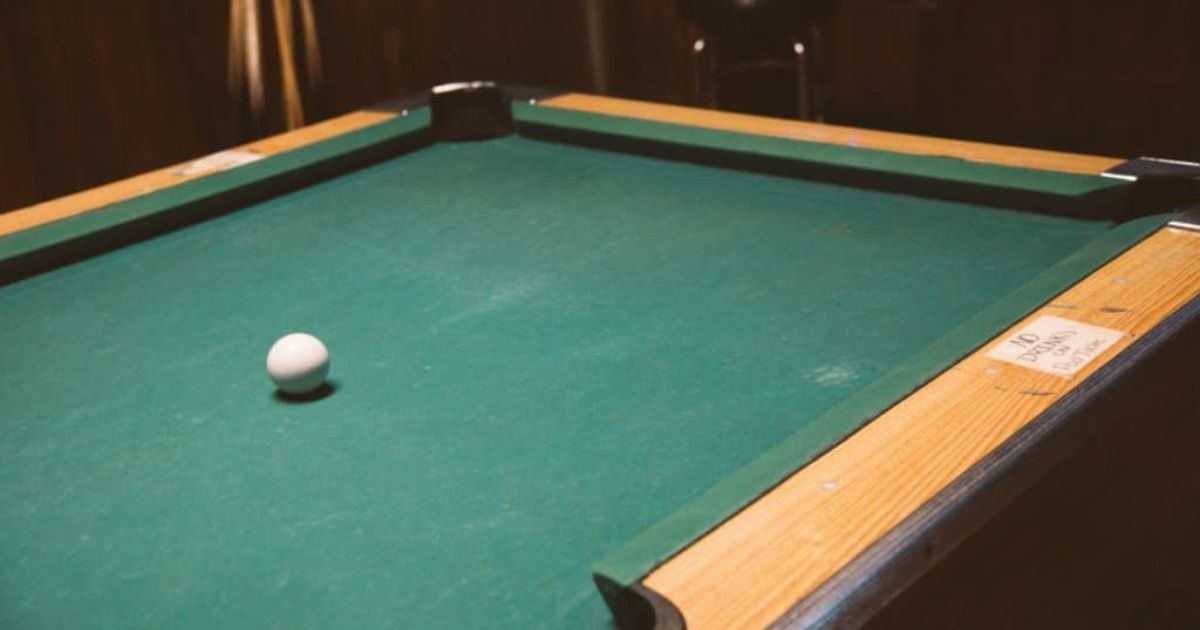How To Measure A Pool Table? 4 Pool Table Dimensions
Pool table measurements are necessary tasks when you want to possess a pool table. Knowing the size and weight of your pool table can assist you in devising a strategy for removing, refelting, or replacing it. However, few individuals are aware of the proper method for determining a pool table’s size. This article will demonstrate how to measure a pool table from several perspectives.
Measure pool table length and width
Pool table sizes are not determined from one end to the other like the normal way you do with other objects. So how are pool tables measured? Pool table sizes are considered as the playing field’s sizes. The width is calculated from one tip of the rail cushion to the opposite tip on the inside of the playing area. In reality, many different manufacturers can equip their tables with variable-sized rails, which can make a table much bigger or smaller.
Read more: standard pool table size

However, in the business, playing fields are standardized into four sizes. You can follow 3 basic steps as follow to get the sizes of the pool table:
Step 1: Obtain a tape measure.
Step 2: Measure one side of the cushion on the short side (i.e. the table’s width) to the cushion on the other side. Not up under the cushion, but at the top where the ball touches it.
Step 3: Double the width of the playing field to get the length. You might also measure from one cushion to the other on the long side of the table.
Measure pool table height

Similar to the length and width of the pool table. The height is also an important criterion. This measurement is taken from the ground up to the playing surface’s top, not to the top of rails or cushions. So, if you want to know how tall your table is, you may either eyeball it or apply some basic math. The eyeball approach entails taking a tape measure, placing one end on the floor, and measuring to the outside of the table, about where the playing surface is located. You should be able to get an exact reading, usually within 1-2 inches.
Another approach is to take two measurements. To begin, determine the distance between the top of the playing field and the top of the railing. Then, from the floor to the top of the railing, take a measurement. The height of your pool table can be calculated by subtracting the first value from the second.
Measure pool table weight

The pool table is constructed from many different components including cushions, slate, pockets, cloth, legs, bumpers, and rails,… Each component has its own function and accounts for some percentage of the pool table’s weight. However, slate is the most affecting component which accounts for 60-70 percent of the total weight. So in order to measure pool table weight, you have to determine which type of slate the pool table use. Slate is a type of rock with excellent properties that may be used to create a great, long-lasting pool table playing surface, and is used on most modern pool tables. A 1-inch slate bed is common on most tables. Slates are often available in one huge piece or three separate parts for easier transportation. One-piece slate beds are approximately 3/4 inches thick, whereas 3-piece slate beds are 1 inch thick. 1-inch pieces are heavier than 3/4-inch pcs.
Some pool tables use MDF instead of slate to reduce their weight. This option is suitable for you if you have a limited budget and want to move the table frequently since with this material, the biggest pool tables are just around a few hundred pounds in weight.
4 Pool Table Sizes

There are four standard pool table sizes available on the market: 7-foot, 8-foot, 8.5-foot, and 9-foot.
- The most prevalent uses for 7-foot pool tables dimensions are in bars and as coin-operated tables.
- 8-foot pool table dimensions are prevalent in houses
- 8.5-foot pool table dimensions are uncommon
- 9-foot pool table dimension for tournaments and billiard rooms which is a professional pool table size
In addition, pool tables do not have to be 7, 8, or 9-foot long. There are 6-foot, 10-foot, and 12-foot tables available. You can even have a customized pool table made to your specifications. The important thing to remember is that you should look for a pool table that meets the 2-to-1 regulation pool table size which means that the length has to be double the width. 6-foot tables are ideal for anyone with a limited room who wants to learn how to play pool. While there are “table-top” and smaller pool tables, playing pool on anything less than a 6-foot table is difficult due to the short playing space.
FAQs
How heavy is your pool table?
The average weight of a pool table varies based on the size, dimensions, and materials used in its manufacture. Pool tables that are portable or compact weigh between 100 and 300 pounds, while full-size slate tables weigh between 700 and 1,000 pounds.
Read Also: How much does a pool table weigh?
Why do we have to measure a pool table?
For various reasons, knowing the pool table dimensions is crucial. It is required to ensure that you have sufficient space to play comfortably. If you wish to have the table re-felted, the cushions replaced, or buy a pool table cover, you’ll need the size. If you want to make money playing pool, you should also know how big the table is. It’s better to practice on 9-foot tables if at all feasible because competitions are played on them. Knowing the height of a pool table is also necessary if you want your table to be the same height as the pros’.
Conclusion
In short, after studying all of the above information, you may find that understanding how to measure a pool table is far too simple. However, the most important thing is to put these theories into reality while replacing, removing, buying a pool table, or even creating a custom pool table for your space. If you don’t want to make any costly or time-consuming blunders, try to grasp the regulation pool table size and begin practicing right away.

Dave Pearson
Dave Pearson, the world's leading pool entertainer, is renowned globally as the ultimate exhibition player.
Boasting 20 world records endorsed by the prestigious Guinness Book of World Records, Dave established a legendary history in the sport industry.

Did I miss the part where we determine what the top is made of? Is there a way to do this without taking the table apart?